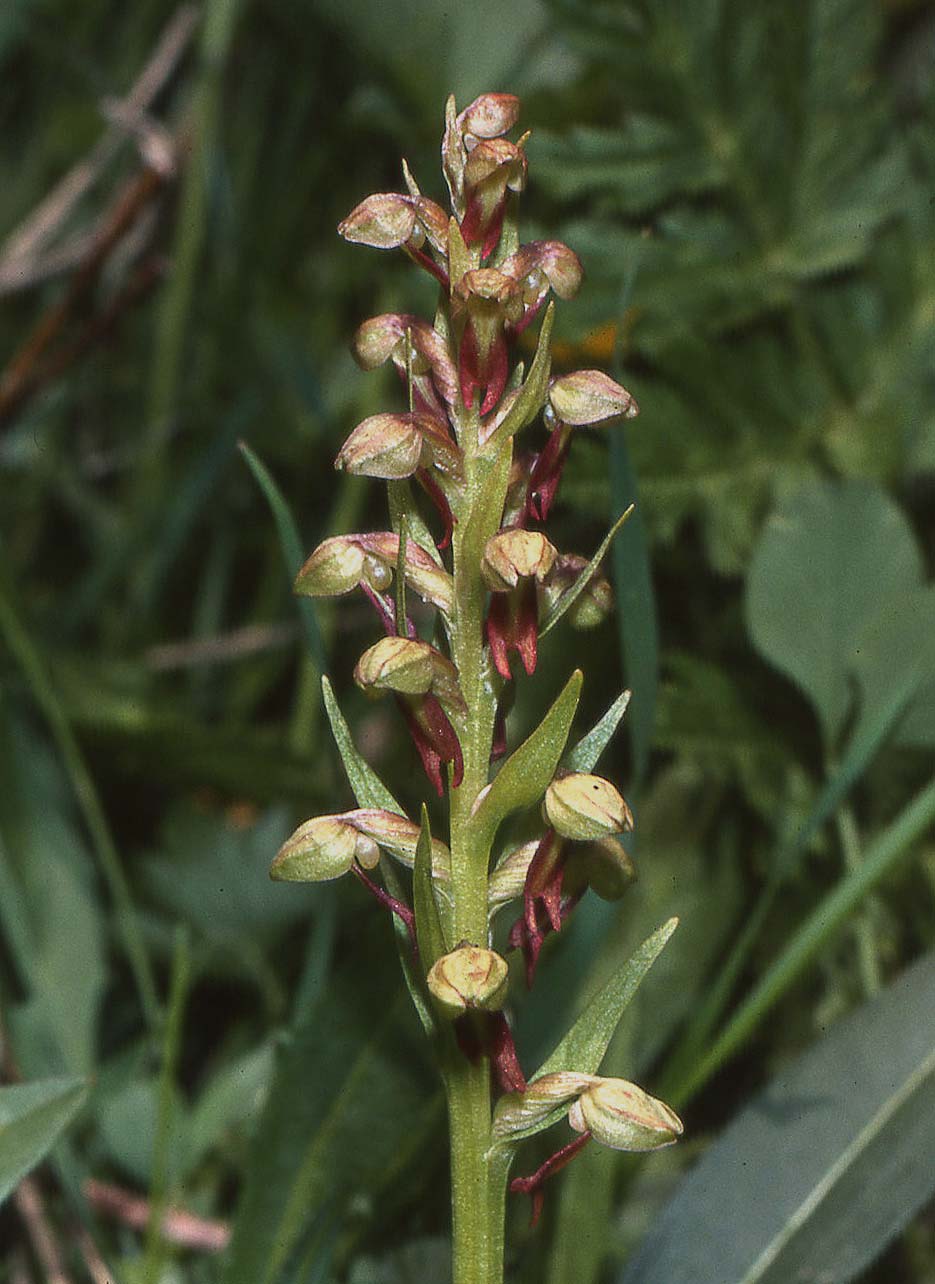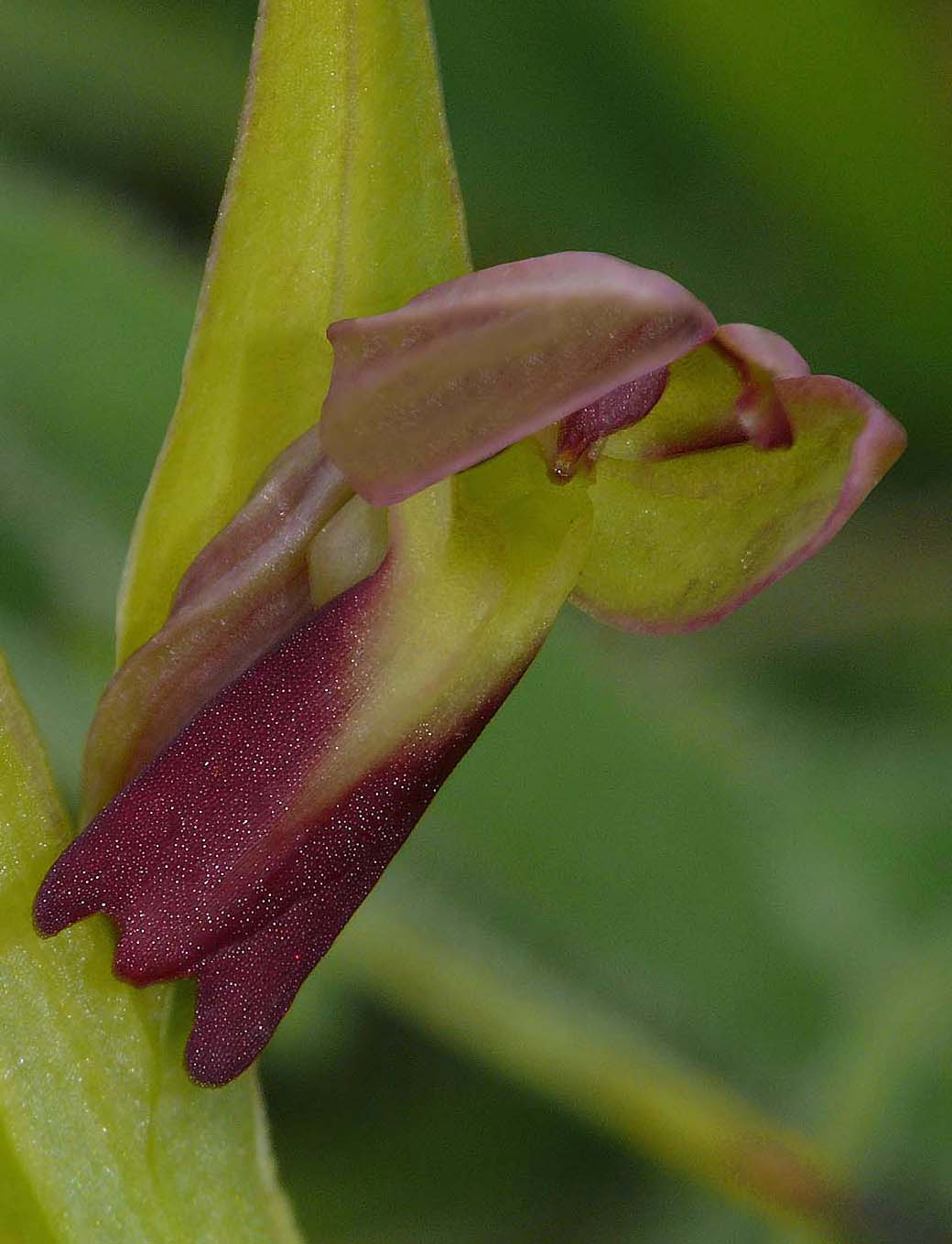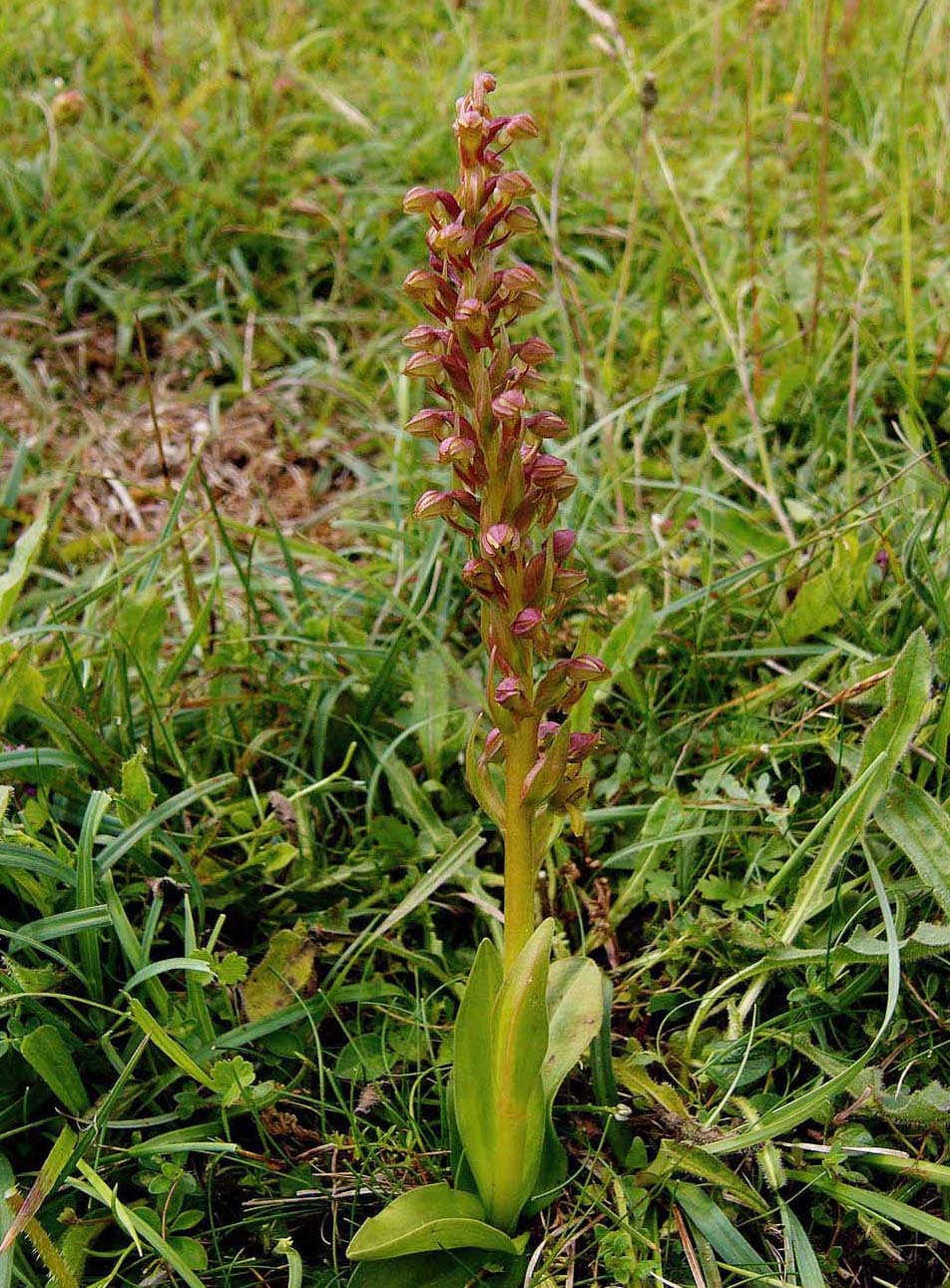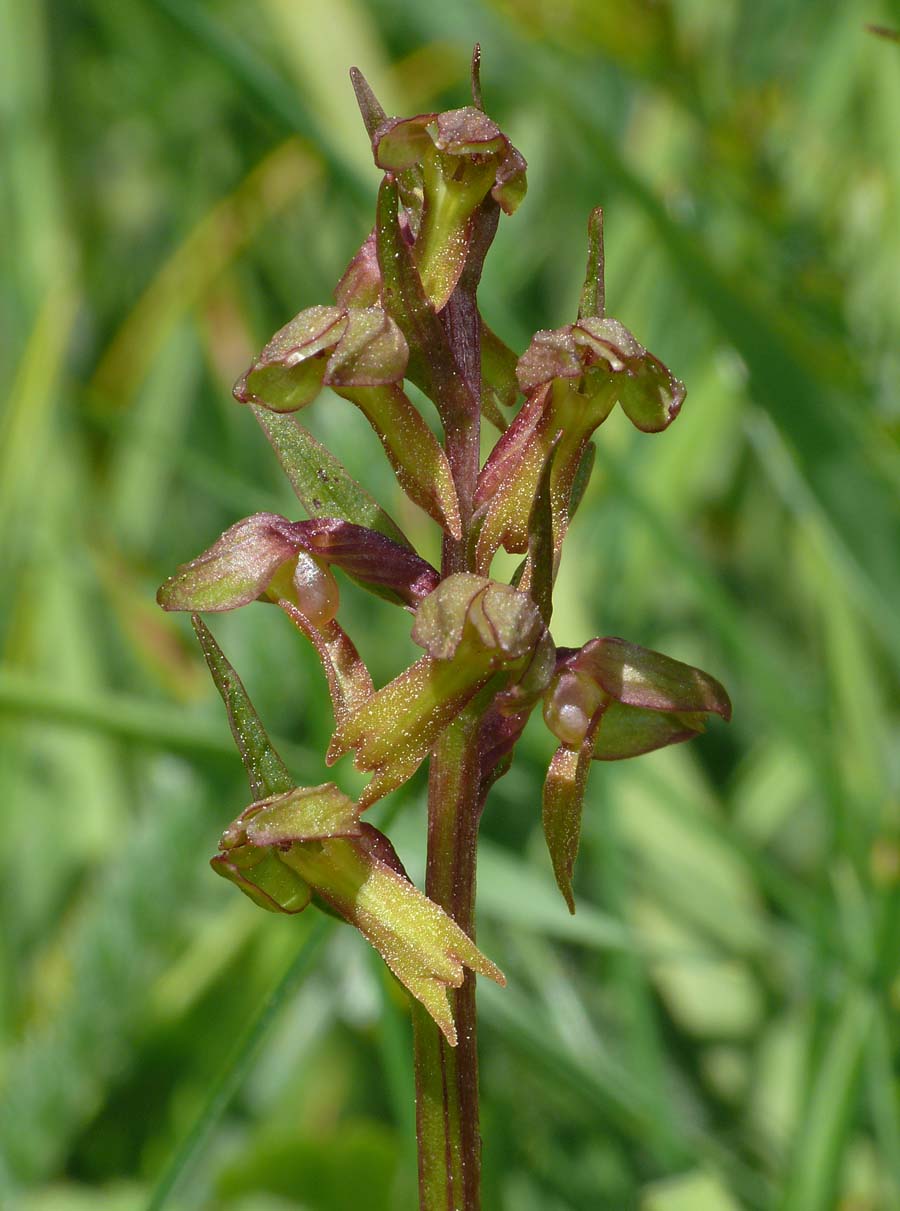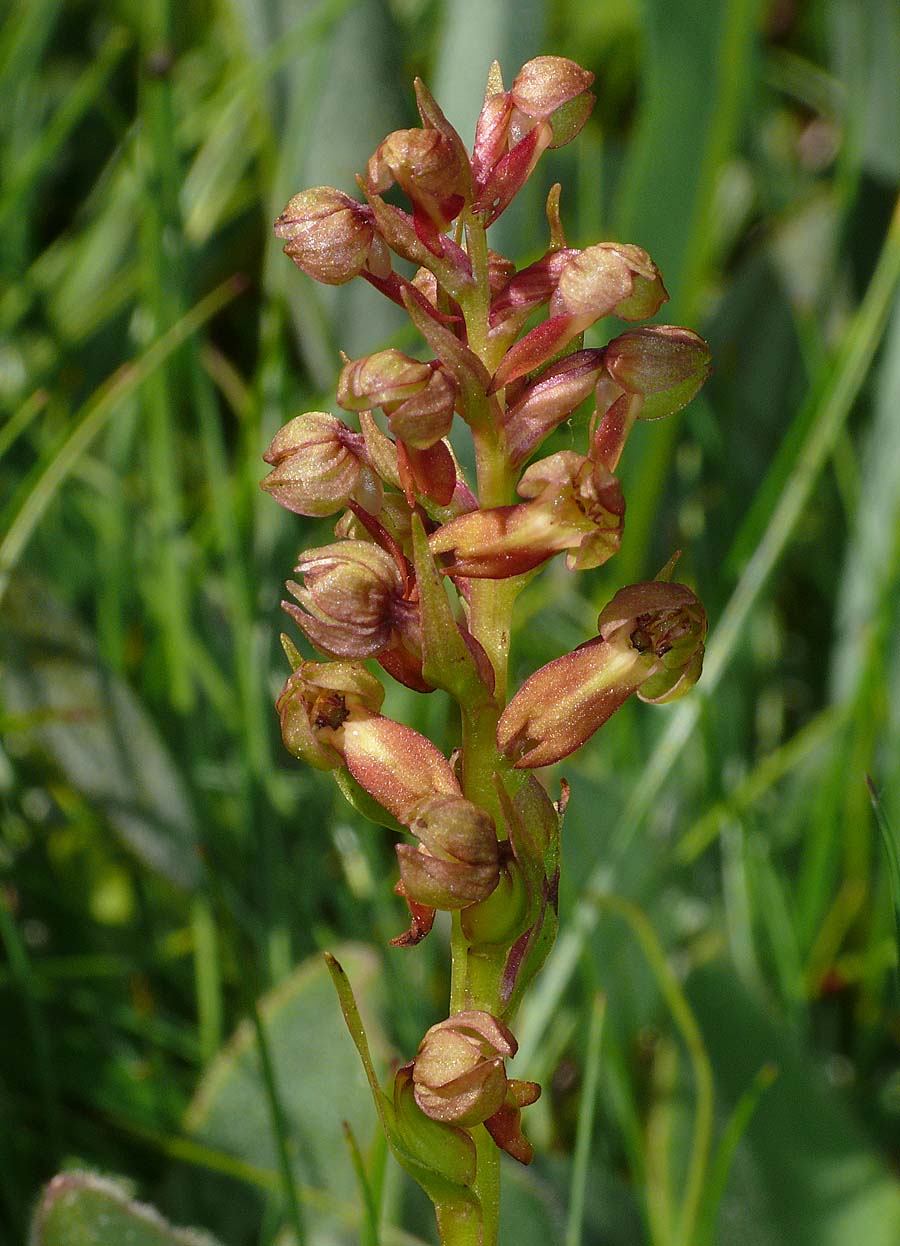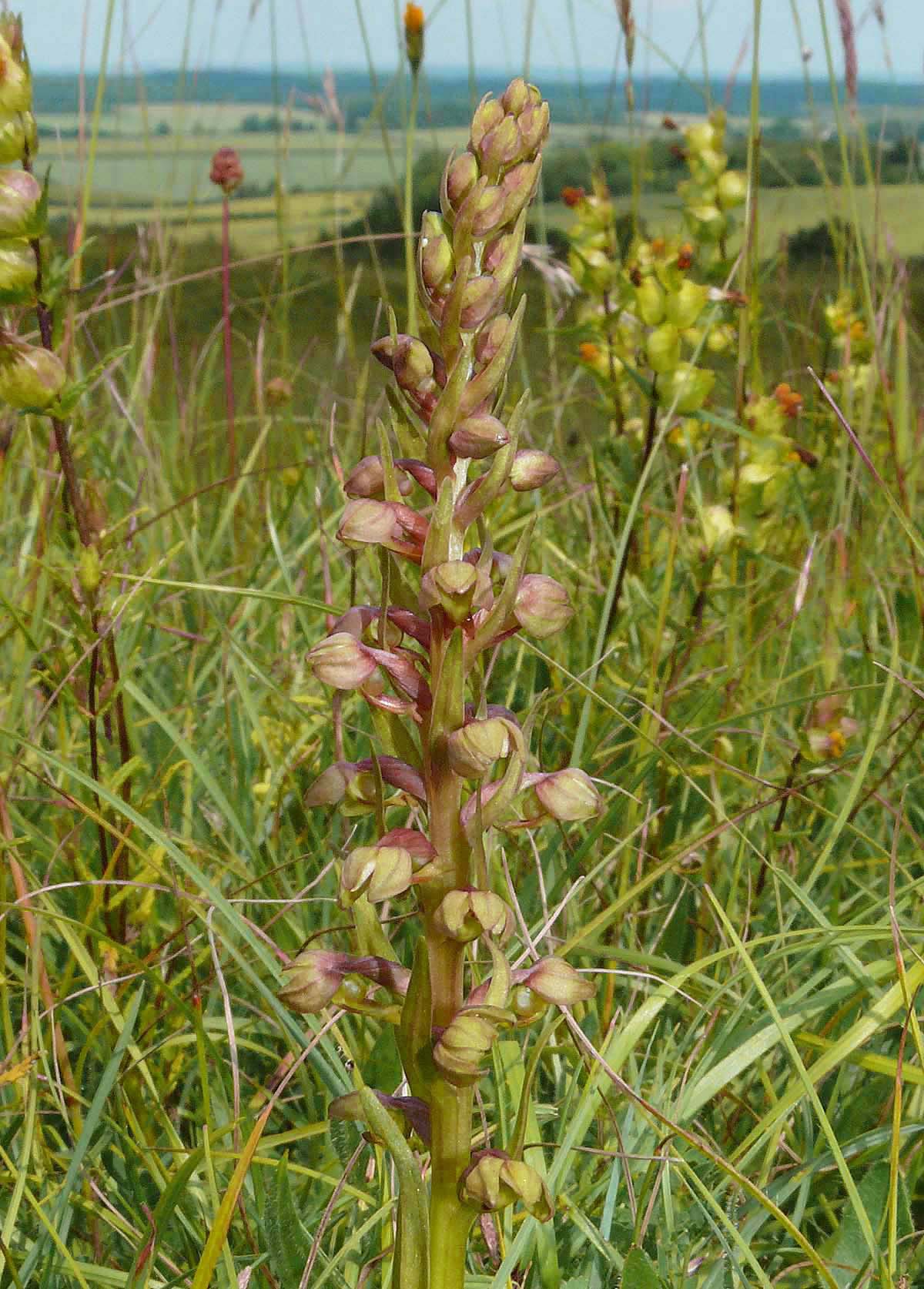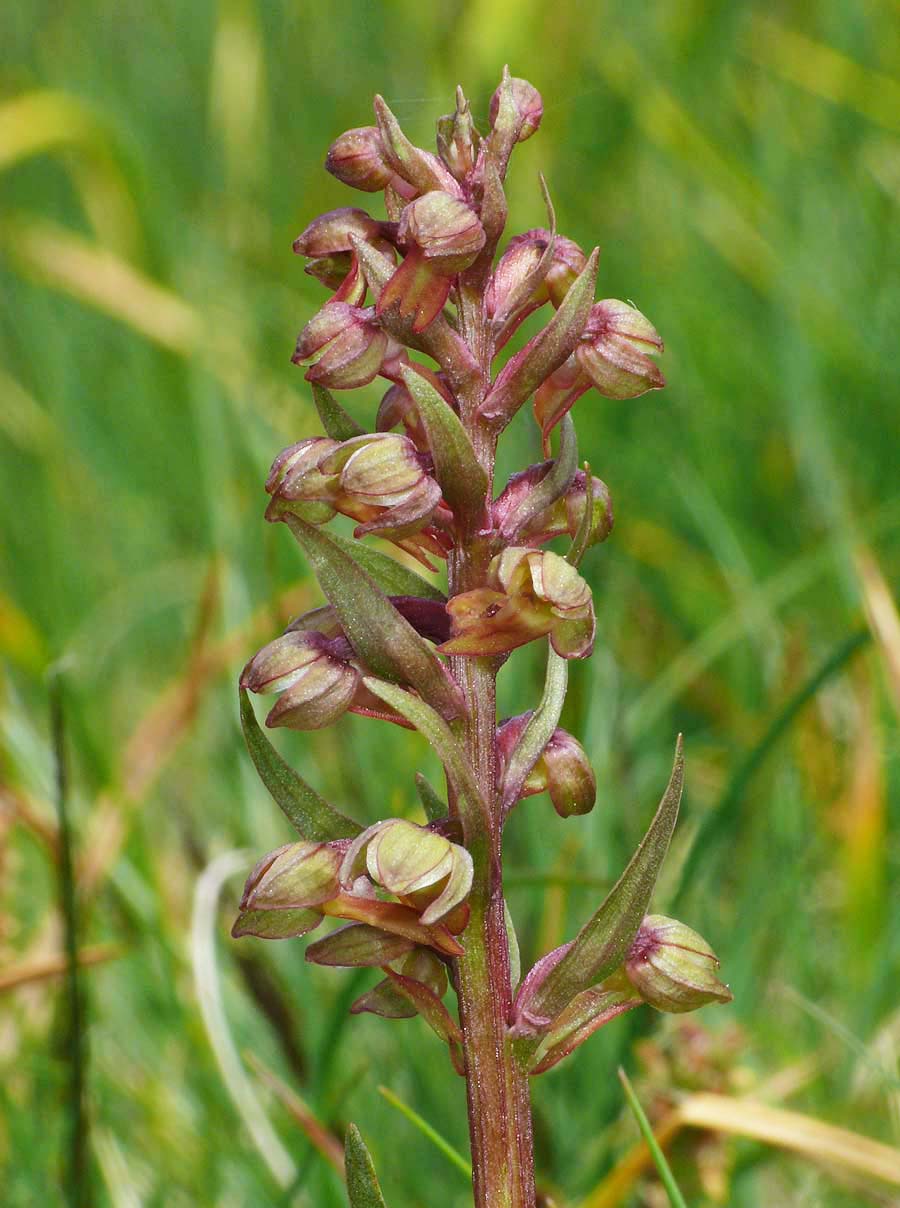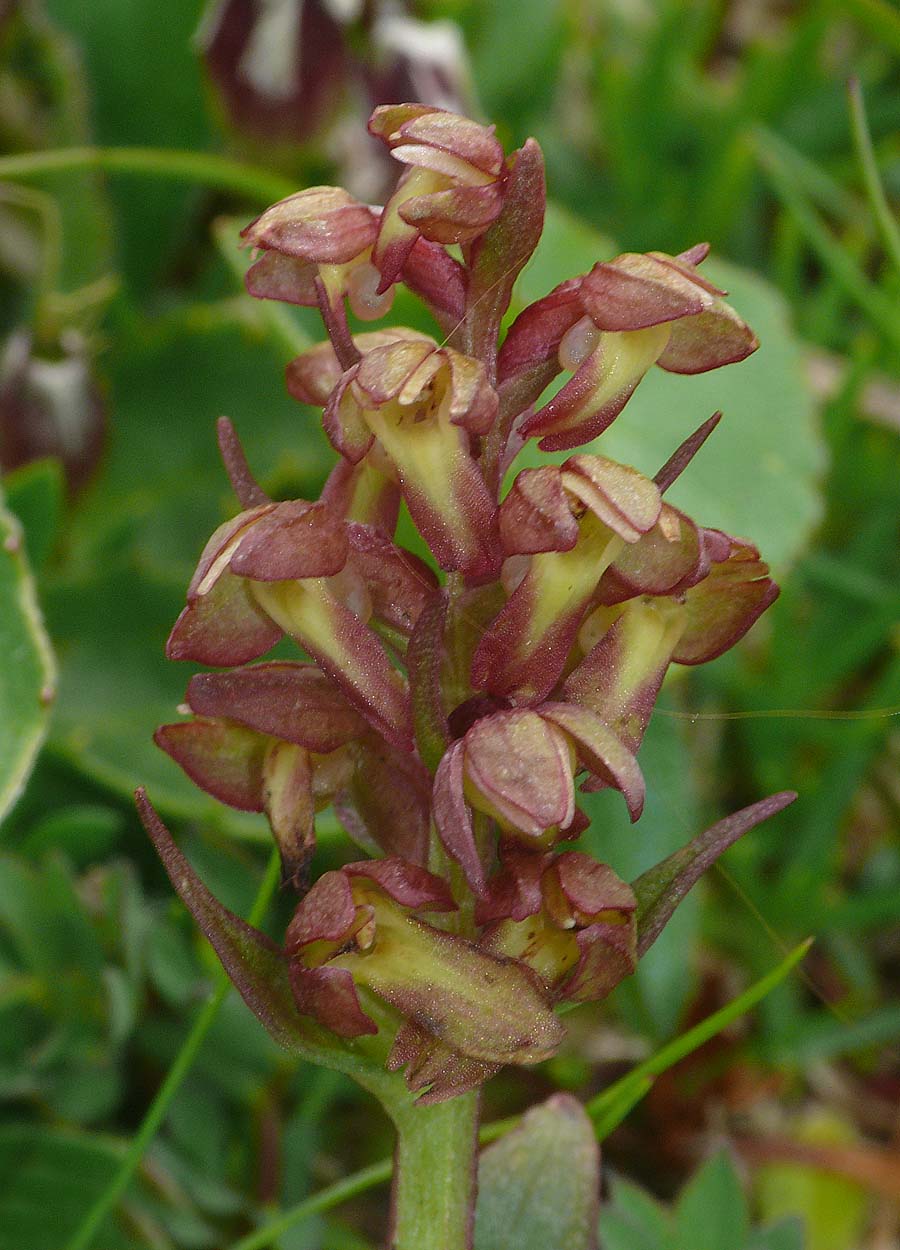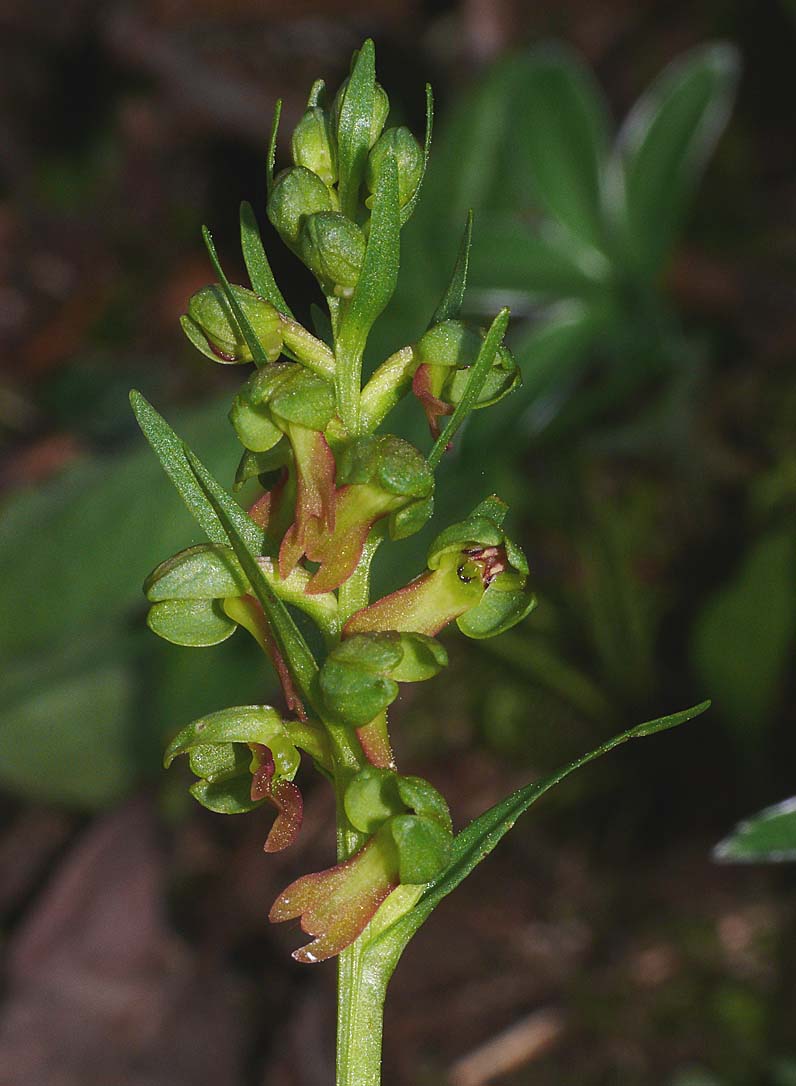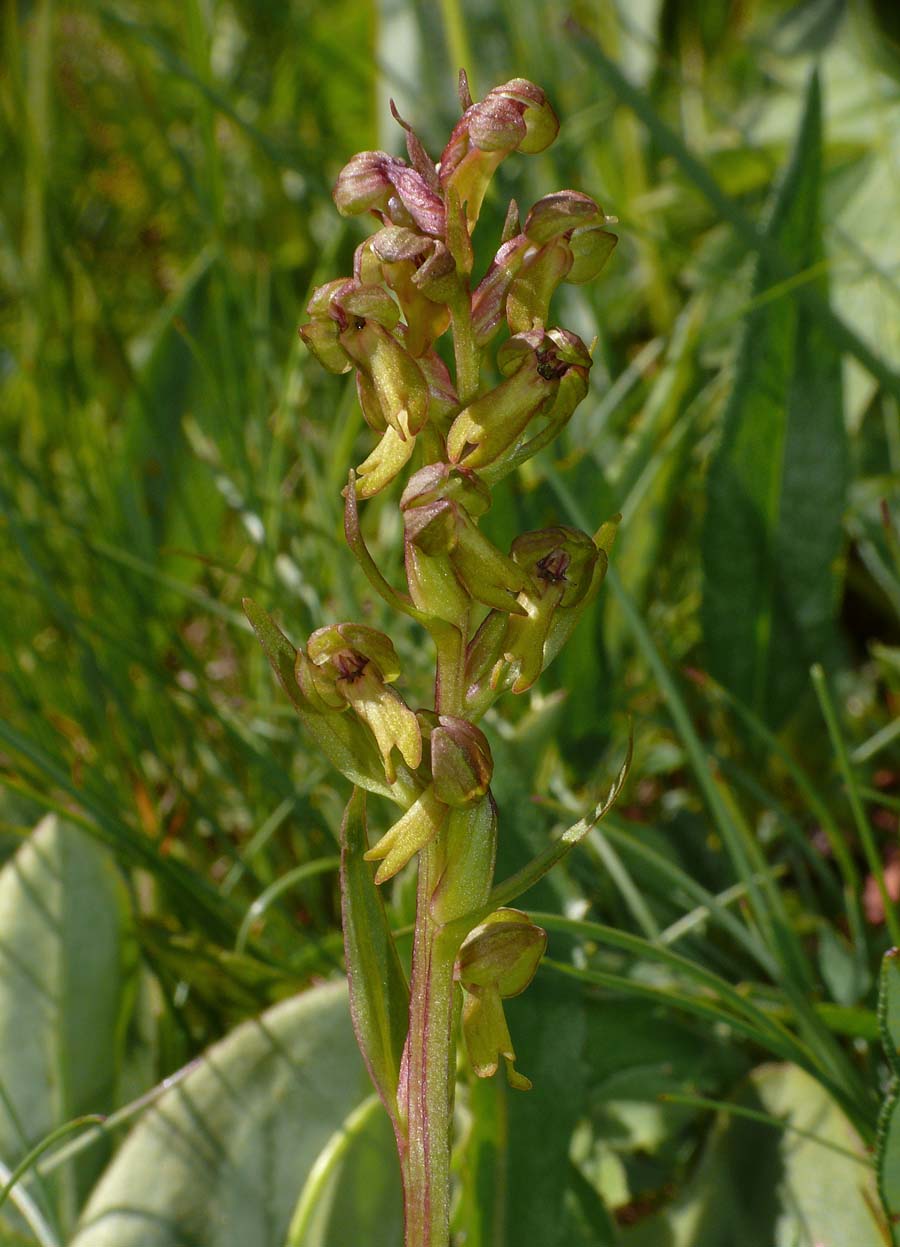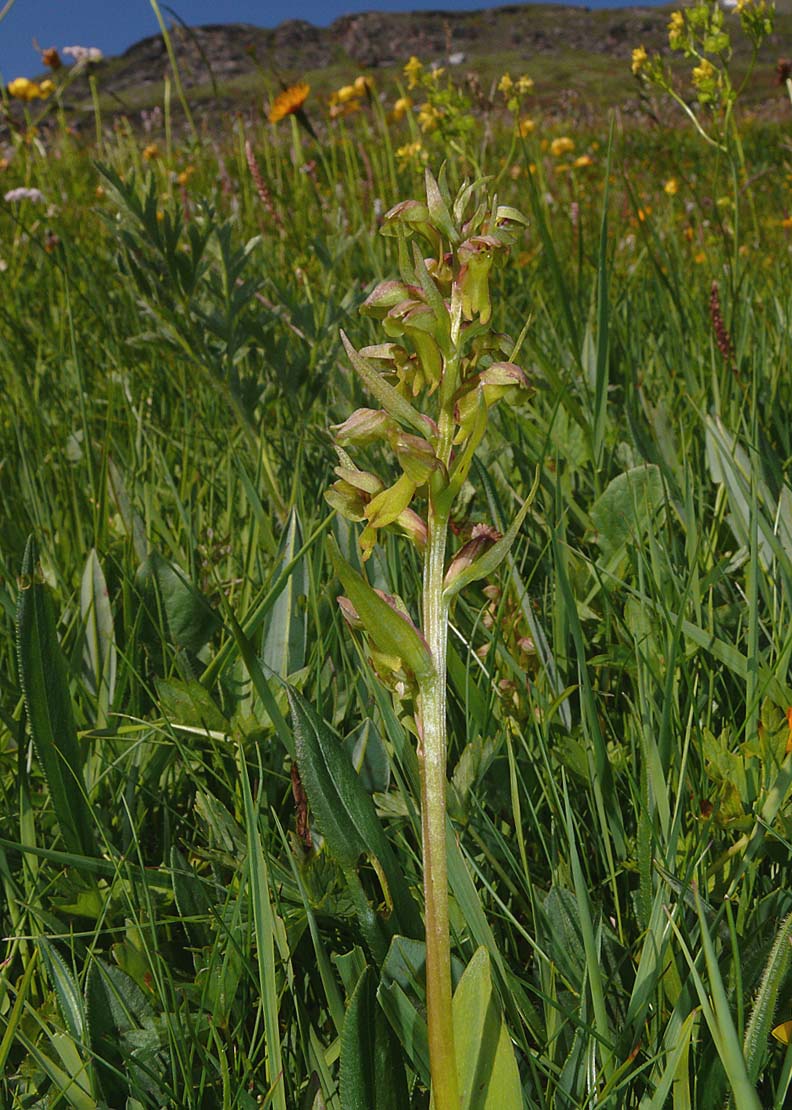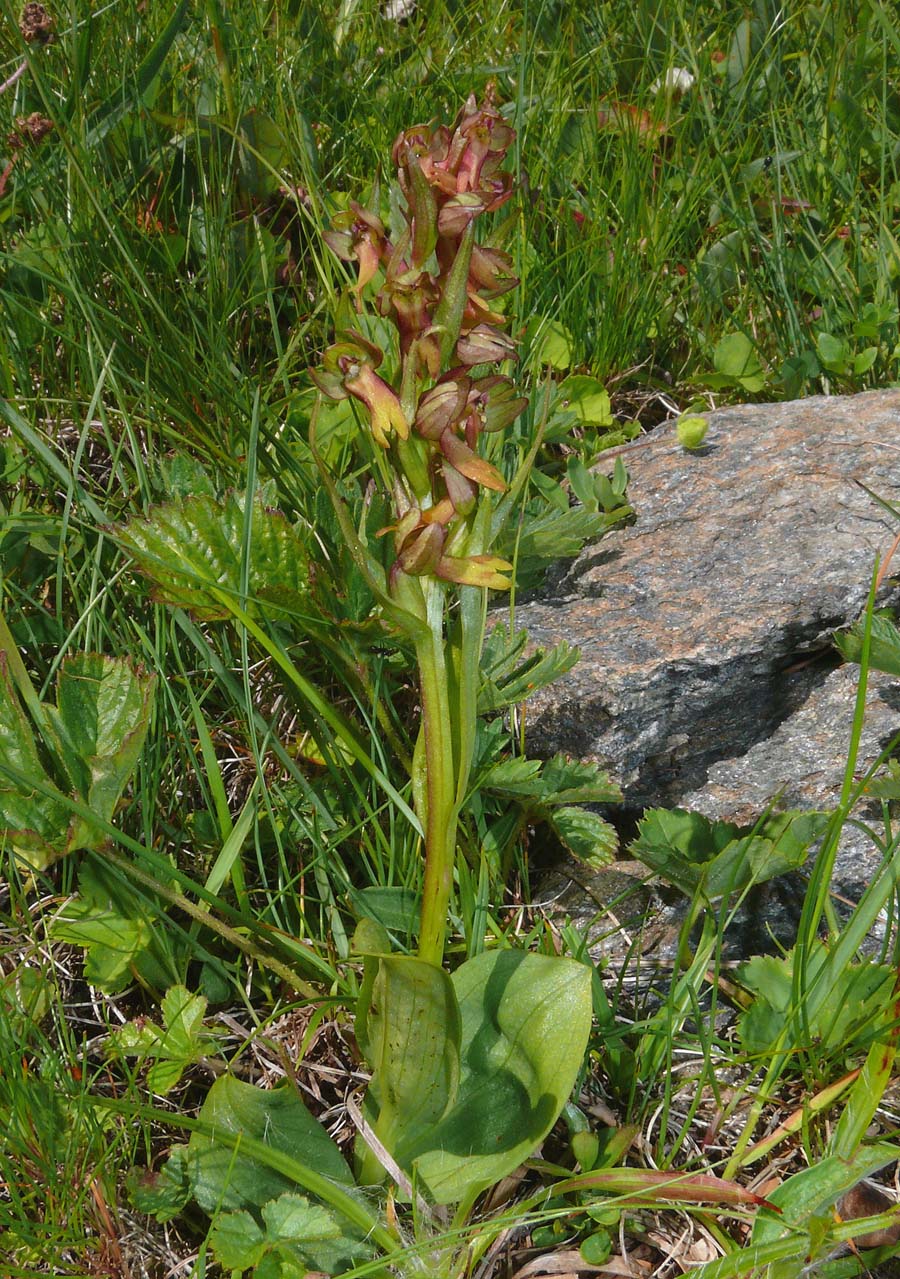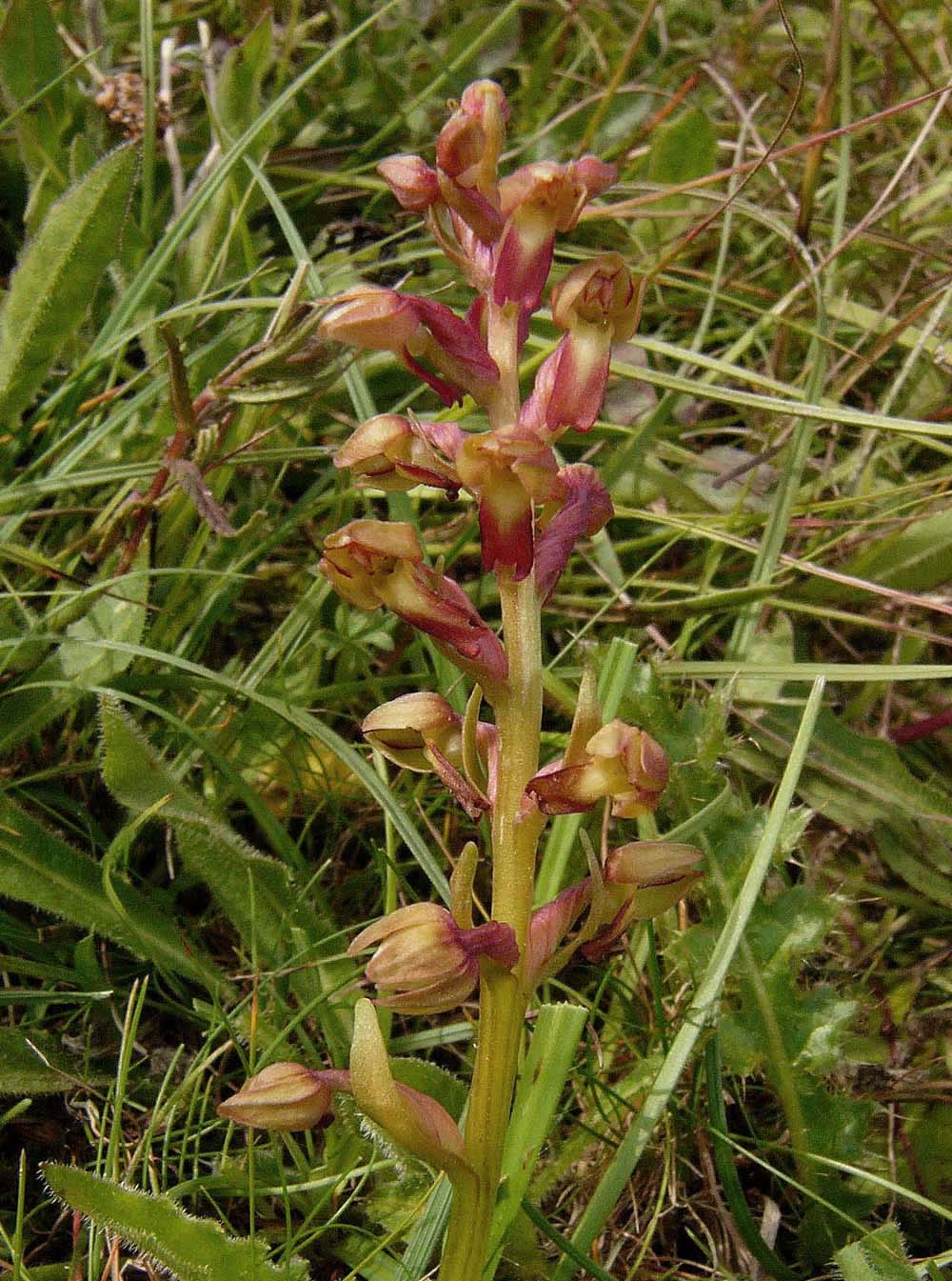This
species was first described by Hartman from Koenigsberg, Germany in
1753 and its name refers to the overall dull green appearance of the
plant. Until quite recently this species was the single European member
of the genus Coeloglossum but molecular analysis has determined that the species is more correctly positioned with the genus Dactylorhiza.
D. viridis is a widespread but highly localised orchid wtih a circumboreal distribution throughout most of Europe. Its choice of habitat is extremely varied and the species can be found in dry or wet conditions, in full sun or shade and on alkaline or acid substrates. Although it may occur at high altitudes throughout its distribution, in the south of it is range it is virtually confined to montane grasslands and light woodland. D. viridis can tolerate altitudes up to nearly 3000 metres and is perfectly at home growing alongside more specialized Alpine orchids such as the Vanilla Orchids.
This species cannot be described as much of a beauty and despite a degree of variability, at lower elevations is unlikely to be confused with any other species. In alpine conditions however, where it tends to be smaller in stature, it can easily be mistaken for the equally diminutive C. alpina. Closer inspection will reveal that the leaves of this latter species are numerous and grass like, whereas in D. viridis there is a rosette of 2 to 4 small elliptical leaves. The vegetative material is predominantly green but the flowers can be either similarly coloured or exhibit shades of brown, red or olive. Several variants have been described of which the most easily recognized is longibracteatum. None of these variants appear however to be of any evolutionary significance. The pictures come from the chalk grasslands of Southern England and the Alps, dating from the last week of June. .
D. viridis is a widespread but highly localised orchid wtih a circumboreal distribution throughout most of Europe. Its choice of habitat is extremely varied and the species can be found in dry or wet conditions, in full sun or shade and on alkaline or acid substrates. Although it may occur at high altitudes throughout its distribution, in the south of it is range it is virtually confined to montane grasslands and light woodland. D. viridis can tolerate altitudes up to nearly 3000 metres and is perfectly at home growing alongside more specialized Alpine orchids such as the Vanilla Orchids.
This species cannot be described as much of a beauty and despite a degree of variability, at lower elevations is unlikely to be confused with any other species. In alpine conditions however, where it tends to be smaller in stature, it can easily be mistaken for the equally diminutive C. alpina. Closer inspection will reveal that the leaves of this latter species are numerous and grass like, whereas in D. viridis there is a rosette of 2 to 4 small elliptical leaves. The vegetative material is predominantly green but the flowers can be either similarly coloured or exhibit shades of brown, red or olive. Several variants have been described of which the most easily recognized is longibracteatum. None of these variants appear however to be of any evolutionary significance. The pictures come from the chalk grasslands of Southern England and the Alps, dating from the last week of June. .
